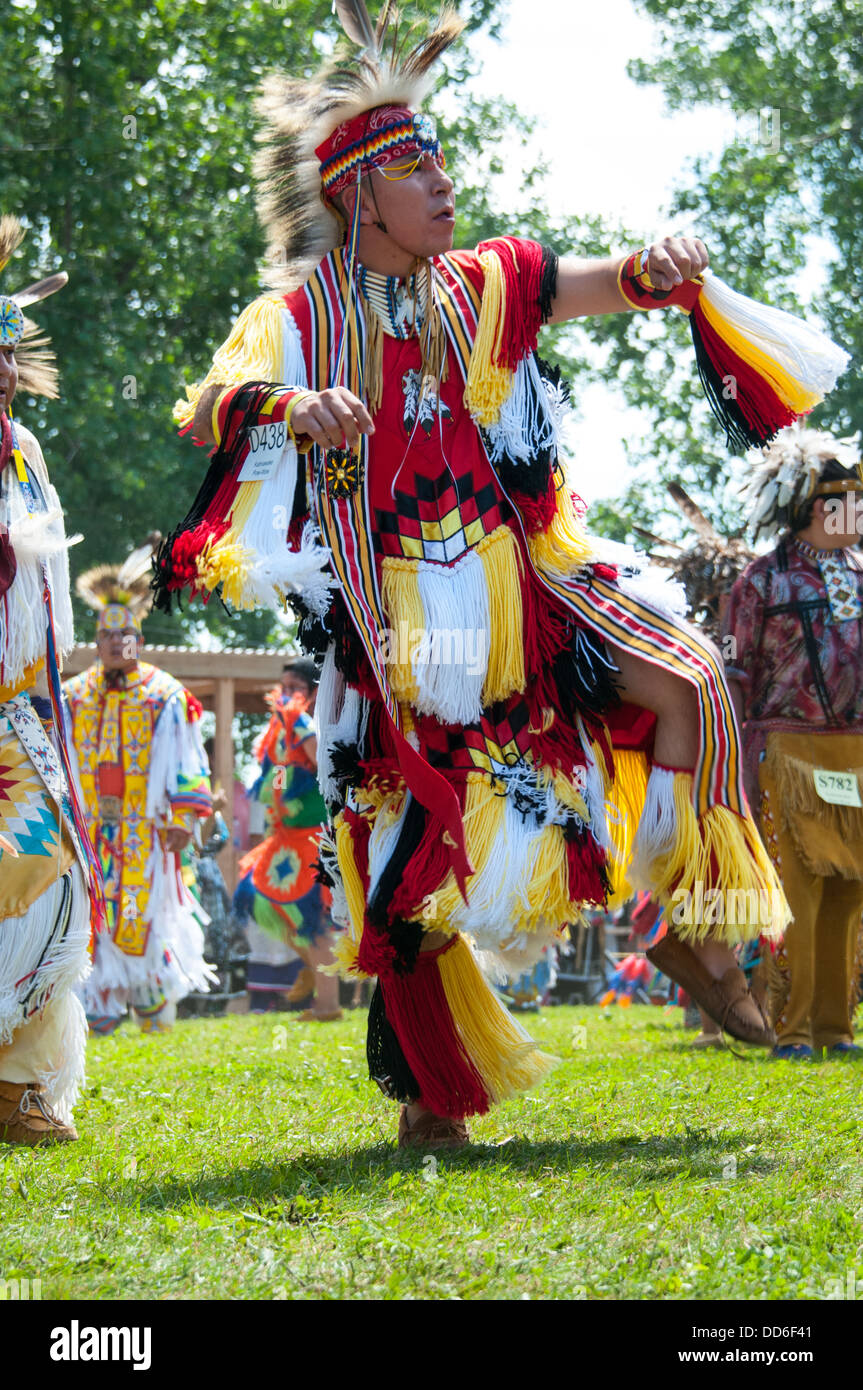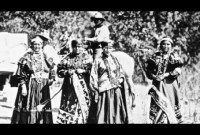
Kahnawake: A Beacon of Resilience on the St. Lawrence
Nestled on the south shore of the St. Lawrence River, directly across from Montreal, lies Kahnawake, a territory that stands as a living testament to the enduring spirit, adaptability, and unwavering self-determination of the Kanien’kehá:ka (Mohawk) people. Its history is not merely a chronicle of events, but a vibrant tapestry woven with threads of ancient traditions, colonial pressures, economic innovation, and fierce battles for sovereignty. From its origins as a mission settlement to its present-day status as a dynamic, self-governing community, Kahnawake’s journey is a powerful narrative of resilience in the face of centuries of external forces.
The story of Kahnawake begins long before European contact, with the Kanien’kehá:ka, or "People of the Flint," as a foundational nation of the Haudenosaunee (Iroquois) Confederacy. Their traditional territories stretched across much of present-day New York State and parts of southern Ontario and Quebec. Renowned for their strategic prowess, diplomatic acumen, and formidable warrior culture, the Mohawks played a pivotal role in the vast pre-colonial trade networks and geopolitical landscape of northeastern North America. Their longhouses, symbolizing the unity of their extended families, dotted the landscape, and their rich oral traditions, passed down through generations, preserved their history and spiritual connection to the land.
The arrival of European powers in the 17th century brought profound changes. The French, seeking to expand their fur trade empire and spread Christianity, established a series of missions. One such mission, initially at La Prairie and later relocating several times, eventually settled at its current site in 1716. This was the genesis of Kahnawake, a community largely composed of Kanien’kehá:ka who had chosen to align with the French and adopt Catholicism, often while maintaining core aspects of their traditional culture. This period was marked by complex alliances, as the Mohawks of Kahnawake navigated their relationship with both the French and their Haudenosaunee brethren to the south, who often allied with the English. The 1701 Great Peace of Montreal, a landmark treaty that saw the Haudenosaunee Confederacy and New France agree to a lasting peace, solidified Kahnawake’s strategic neutrality, allowing it to become a crucial diplomatic bridge between Indigenous nations and European powers.

The land itself, known as the Seigneury of Sault St. Louis, was granted by the King of France in 1680 to the Jesuits for the use of the Mohawks. This seemingly benevolent act would become a source of contention for centuries. While intended for the Mohawks, the legal framework of a seigneury meant the title remained with the Jesuits and later the Crown, creating a complex and often disputed relationship to the land that fueled later struggles for self-determination.
The 18th century brought further upheaval with the Seven Years’ War (French and Indian War), which ultimately saw British supremacy established in North America. Kahnawake Mohawks, ever pragmatic, adapted to the new colonial reality. While many had fought alongside the French, they quickly navigated the shift in power, often serving as scouts and negotiators for the British, and later maintaining a careful neutrality during the American Revolution. Despite their strategic value, the British colonial administration, like the French before them, increasingly sought to control and assimilate Indigenous populations, leading to the gradual encroachment on Kahnawake’s traditional hunting and fishing grounds.
As the 19th century dawned, Kahnawake, like many Indigenous communities, faced immense pressure. The imposition of the Indian Act in Canada in 1876, a paternalistic piece of legislation designed to control every aspect of Indigenous life, further eroded their autonomy. Yet, even under these restrictive laws, the Kanien’kehá:ka spirit of enterprise found new avenues. With Montreal rapidly urbanizing and requiring a massive workforce for its burgeoning construction industry, Kahnawake men discovered a unique economic niche: ironworking. Their innate fearlessness and agility, honed over generations, made them ideally suited for the dangerous work of erecting steel skyscrapers.
This tradition, which began in the late 19th century, transformed Kahnawake. Generations of Mohawk ironworkers, or "Skywalkers" as they became known, traveled across North America, from New York City’s Empire State Building and Chrysler Building to countless bridges and high-rises, contributing significantly to the urban landscape while bringing essential income back to their community. This distinct economic base not only provided financial stability but also reinforced a strong sense of community and identity, as families and cultural practices were preserved despite prolonged absences for work. It’s said that Kahnawake ironworkers would always ensure their children learned the Kanien’kehá:ka language, no matter where their jobs took them, fostering a deep connection to their heritage.
The 20th century saw Kahnawake continue to assert its rights and resist assimilation. The Mohawk Council of Kahnawake (MCK), the community’s elected governing body, steadily worked towards reclaiming greater control over local affairs. However, the most pivotal moment in Kahnawake’s modern history, and indeed in Indigenous-settler relations across Canada, arrived in 1990: the Oka Crisis.
The crisis erupted when the neighboring town of Oka, Quebec, planned to expand a golf course onto a traditional Mohawk burial ground and sacred pine grove. For the Mohawks, this was not just a land dispute; it was a profound violation of their ancestral rights, cultural integrity, and sovereignty. On March 11, 1990, the Kanesatake Mohawks, supported by their Kahnawake and Akwesasne brethren, erected a barricade. When Quebec provincial police attempted to dismantle it on July 11, a violent confrontation ensued, resulting in the death of a police officer.
This incident ignited a 78-day standoff that captivated and shocked the nation and the world. Kahnawake, strategically located at the Mercier Bridge, a vital artery connecting Montreal to its south shore, erected its own barricades in solidarity, effectively shutting down traffic. The image of Mohawk warriors, resolute and defiant, facing down heavily armed police and later the Canadian military, became iconic. The Oka Crisis exposed the deep-seated historical injustices faced by Indigenous peoples, their unresolved land claims, and the systemic racism embedded in Canadian society. It was a brutal awakening for many Canadians, forcing a national conversation about Indigenous rights, sovereignty, and self-determination.
While the crisis was traumatic, it also served as a catalyst. It galvanized the Kahnawake community, strengthening their resolve to assert their inherent rights. In the aftermath, Kahnawake intensified its efforts to achieve greater self-governance and economic independence. The Mohawk Council of Kahnawake developed its own laws and institutions, including a comprehensive membership law designed to protect the community’s identity and resources, a move that has been both celebrated internally and challenged externally.

Today, Kahnawake is a vibrant, self-sufficient community, a testament to the resilience forged through centuries of struggle. While ironworking remains a proud part of its heritage, the economy has diversified significantly. Kahnawake is a leader in Indigenous-owned businesses, particularly in the gaming and tobacco industries, which have been sources of both economic prosperity and ongoing jurisdictional disputes with provincial and federal governments. These industries, though controversial to some, represent Kahnawake’s assertion of economic sovereignty and its rejection of dependency. The community also boasts a thriving construction sector, successful retail enterprises, and a growing tourism industry that highlights its rich cultural heritage.
Cultural preservation and language revitalization are central to Kahnawake’s identity. The Kanien’kehá:ka language, once endangered, is experiencing a resurgence thanks to immersion schools like the Kahnawake Survival School, which has been instrumental in teaching generations of children their ancestral language and traditions. Community events, ceremonies, and the continued practice of traditional governance structures, such as the Longhouse, reinforce the deep connection to their Haudenosaunee roots.
Yet, Kahnawake’s journey is ongoing. Challenges persist, including ongoing jurisdictional disputes with the federal and provincial governments, the complexities of maintaining a distinct identity in a globalized world, and the need to balance economic development with environmental stewardship. The membership law, which restricts non-Mohawk spouses from living in the community, remains a subject of debate, highlighting the internal complexities of defining and preserving collective identity.
In essence, Kahnawake is more than just a reserve; it is a nation within a nation, a dynamic cultural and political entity that has consistently asserted its sovereignty. Its history, marked by both adversity and triumphs, serves as a powerful reminder of the enduring strength of Indigenous peoples and their fundamental right to self-determination. From the resilience of the ancient Kanien’kehá:ka to the tenacity of the Skywalkers and the unwavering courage displayed during the Oka Crisis, Kahnawake stands as a beacon on the St. Lawrence, illuminating the path towards a future where Indigenous rights and sovereignty are fully recognized and respected. Its story is a vital chapter in the larger narrative of North America, one that continues to unfold with each passing generation.


